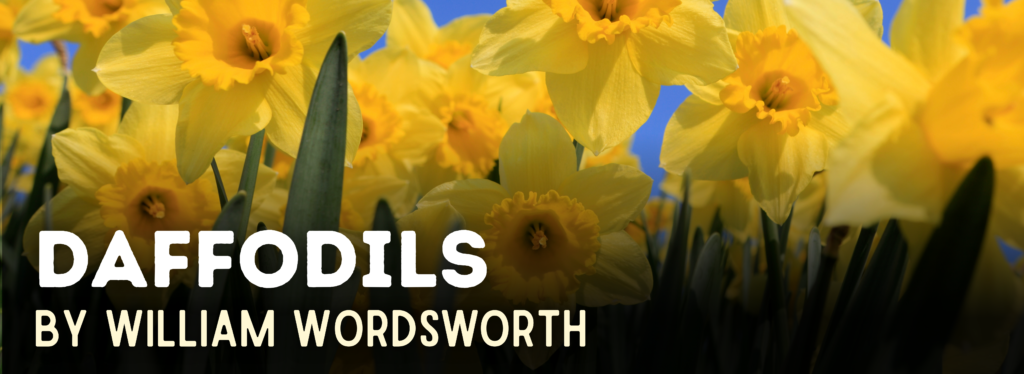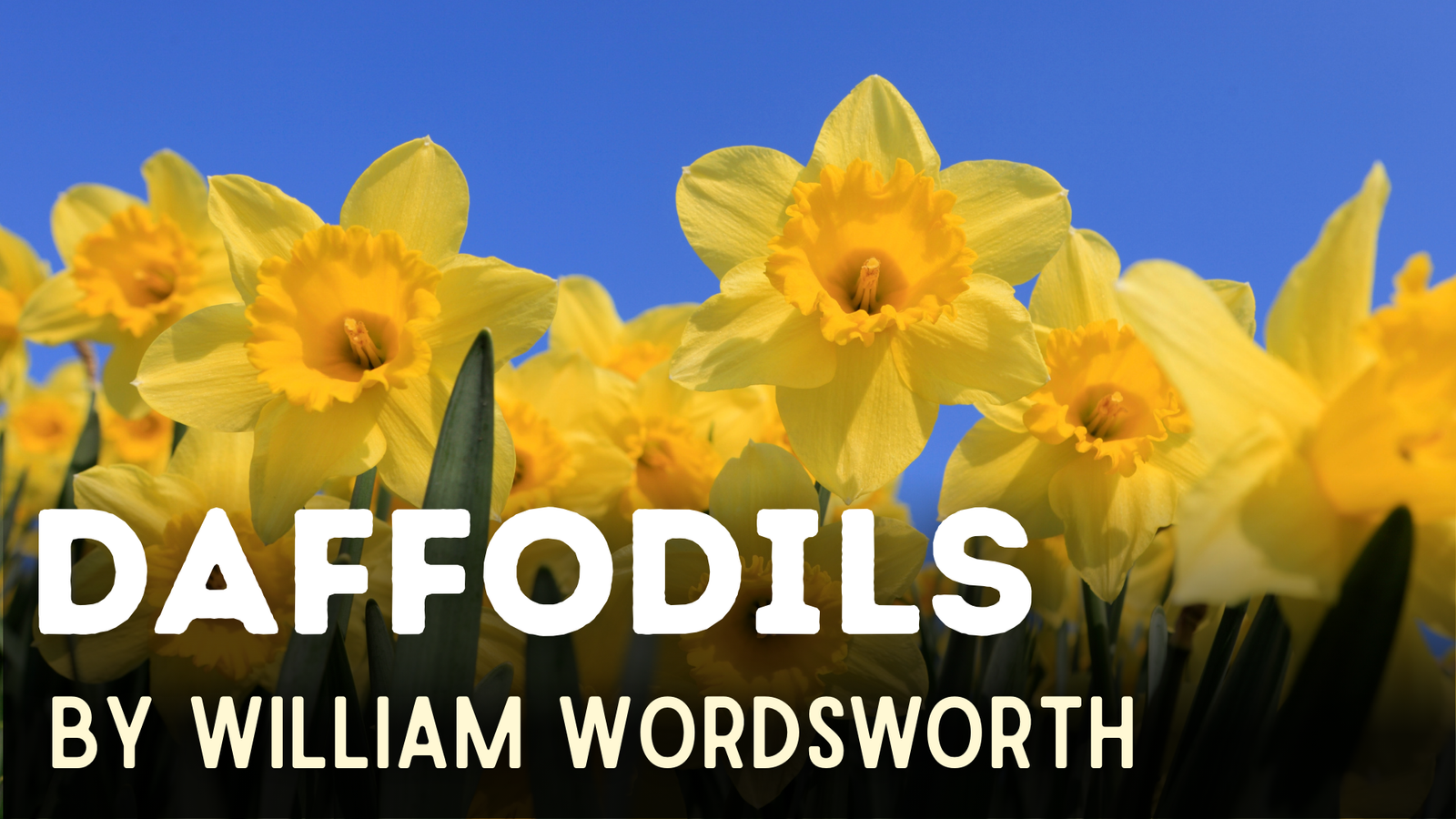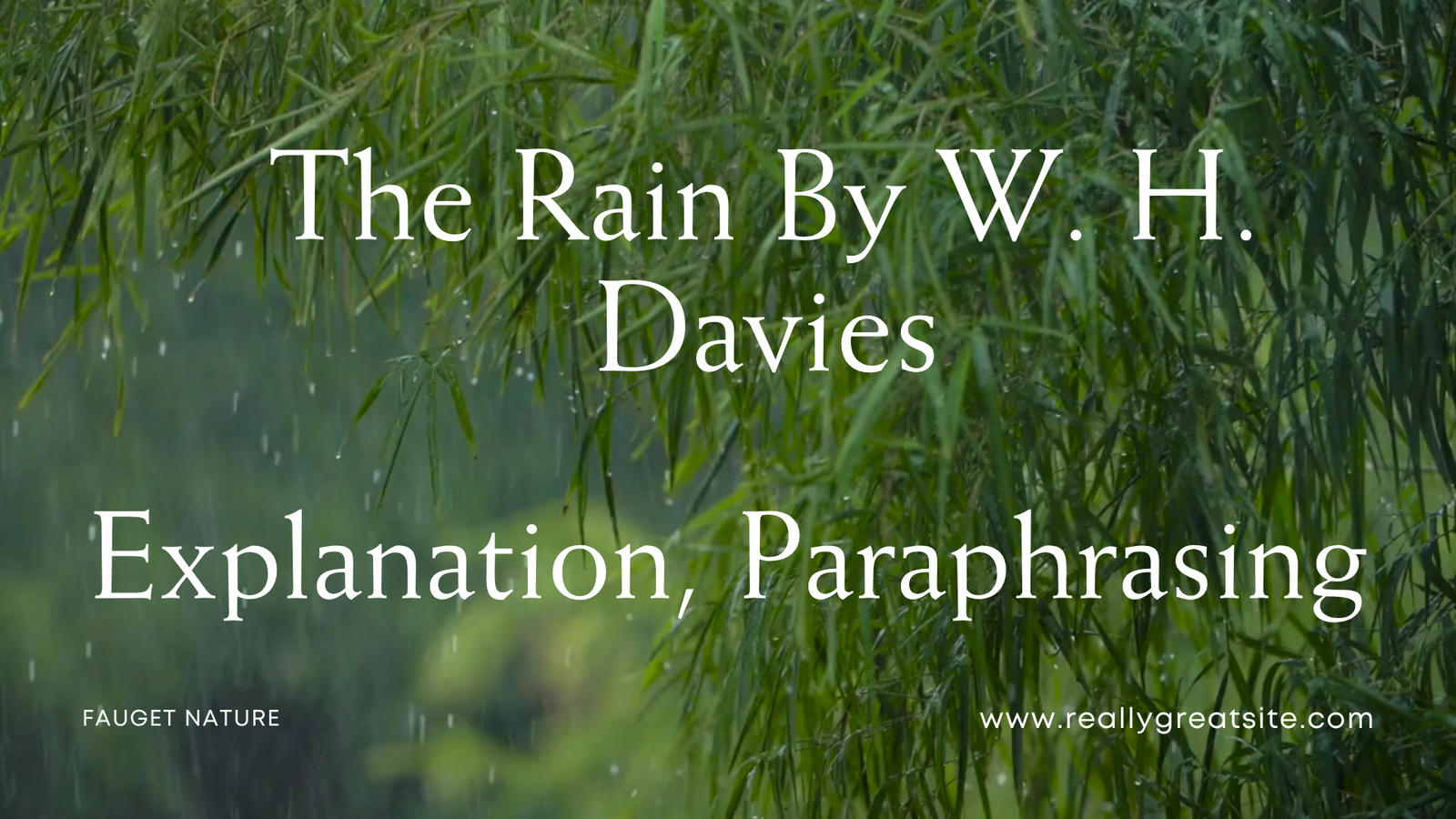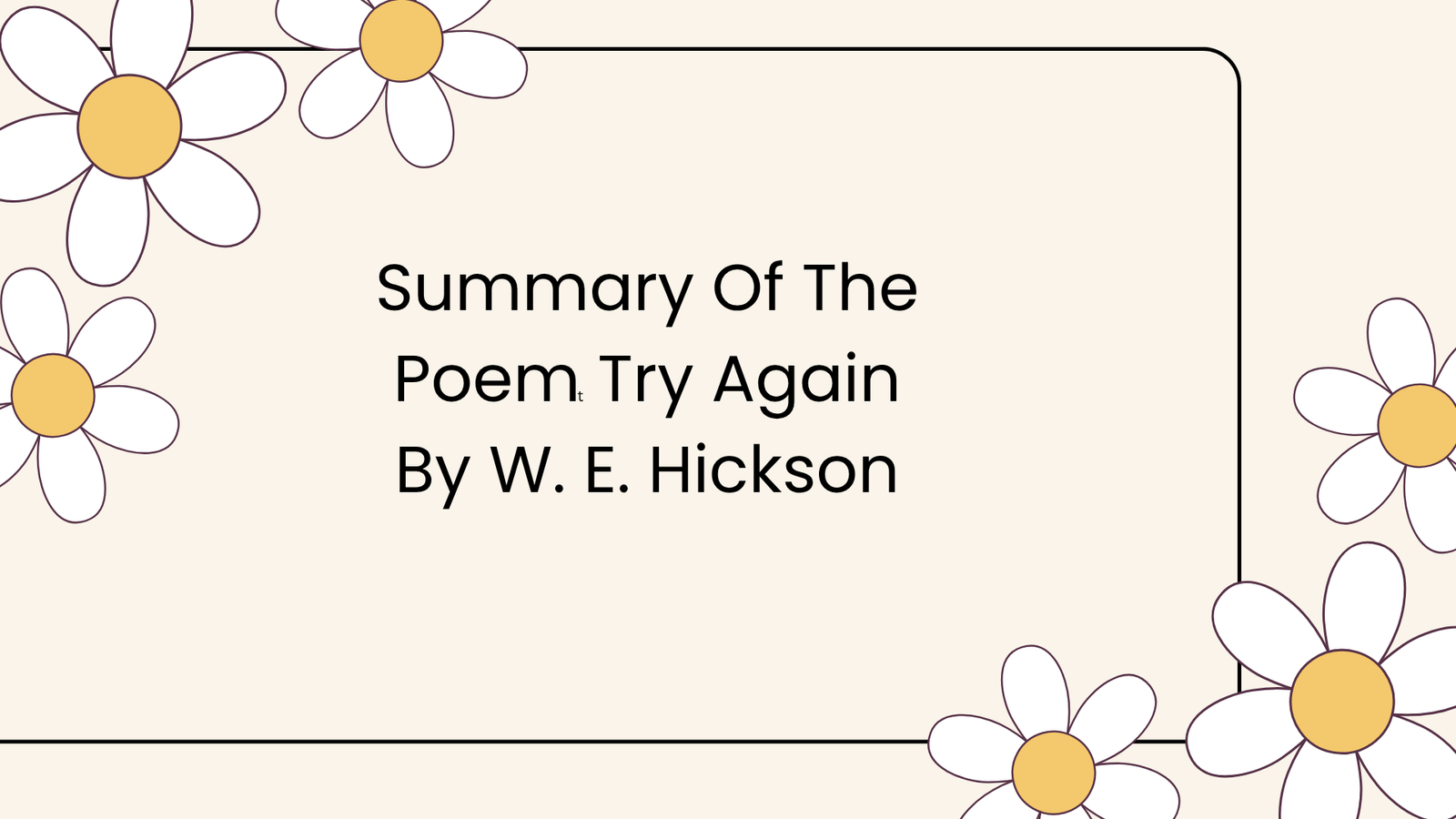
Here is a detailed summary of the poem Daffodils by William Wordsworth.
Introduction of the poet: Daffodils By William Wordsworth
William Wordsworth was born on April,7,1770, in Cockermouth, Cumberland, England. He is referred to as the Poet of Nature. Much of his poetry resonates with themes of Nature. Some of his famous poems include Daffodils, To the Cuckoo, The Two April Mornings, The Solitary Reaper, etc.
Apparent Meaning of the Poem:
The poet wanders and discovers a field of daffodils. The poet thinks that the sight of daffodils is a blessing and a permanent source of pleasure for him. Wordsworth first compares the daffodils with twinkling stars, moreover, to the waves of the lake, due to their incomparable beauty. The scene of the daffodils is saved in the memory of the poet so that after a few years, he can recall these memories in his solitude.
Hidden Meaning of the Poem:
It is a dynamic poem, and so is the inner meaning. The underlying meaning states that Nature has a healing impact on human minds. Daffodils symbolise the beauty of Nature and its purity. The dancing powers of the daffodils signify happiness; the persona is yearning to experience one day. Through the personification of the cloud, the poet can express the impact of his loneliness.
Summary: Daffodils By William Wordsworth
Daffodils is a descriptive, moralistic, and thought-provoking poem, written by the pen of William Wordsworth, a great Romantic poet. He always found something captivating in the company of Nature. He is well-remembered for his eloquence, artistic craft, and love of Nature.
The poem opens with the speaker feeling lonely and isolated, much like a solitary cloud drifting in the sky. As he walks by a serene lake, his attention is captured by a vibrant cluster of yellow daffodils swaying in the gentle breeze along the riverbank. This beautiful scene contrasts with his earlier feelings of melancholy, filling him with a sense of joy and wonder. Similarly, he finds himself captivated by the daffodils, taking the time to truly appreciate their beauty. Especially the way they dance in the wind, which offers a moment of solace and connection to the world around him.
One daffodil is worth a thousand pleasures; then one is too few. -William Wordsworth
Wordsworth then goes on to compare these dancing flowers to the twinkling stars that appear at night, far in the Milky Way. Probably, he wishes to create a resemblance to the way the stars attract us and the impression of the daffodils. This makes sense because the number of stars a person can see in sight is Ten Thousand. So there were daffodils in such a significant number that the poet could say,
"Ten thousand saw I at a glance"
He then compares daffodils to the moving water and waves of the lake. At the same time, he declares proudly that the beauty of the dancing daffodils eclipses the beauty of the entire Nature around them. As a result, he gazes at the vibrant yellow petals swaying gently in the breeze, and he feels a profound connection to the scene right in front of his eyes. The daffodils, with their joyful dance, embody a spirit of vitality and renewal. They draw his attention away from the tranquil waters and the surrounding greenery. The poet finds himself fortunate to have viewed the wondrous scenic beauty:
'I gazed—and gazed—but little thought "
Afterwards, whenever he feels empty or pensive, the memory of those lovely daffodils strikes that inward eye that is the bliss of solitude. Then his heart fills with immense pleasure and dances with the daffodils. Nature and its beauty left an everlasting impression on the poet’s mind. He also feels joyful in the jocund company of those extraordinary daffodils. In times of quiet, this vivid memory serves as a haven. It becomes a refuge that shields him from the turmoil of everyday life. Every petal, dancing delicately in the wind, seems to share whispers of happiness and strength. It serves as a soft reminder that one can find beauty even in the most uncomplicated forms. The bright yellow tones of the blossoms evoke a feeling of nostalgia. It transports him back to that peaceful setting where Nature’s creativity reveals itself in its most genuine form.
The daffodils remind him that he can find happiness in unexpected places and urge him to seek out beauty in everyday life. That is why even in his most solitary hours, the cheerful demeanor of daffodils imbues his spirit with hope and light. This connection to Nature transforms his thoughts into positivity, allowing him to transcend moments of despair or confusion.
“Some memories are unforgettable, remaining ever vivid and heartwarming! “
The poem portrays daffodils, a simple flower, in magical verses and blends them with transcendental romanticism, leaving an everlasting mark on the minds of the readers.
“Allow nature’s peace to flow into you as sunshine flows into trees.” – John Muir





